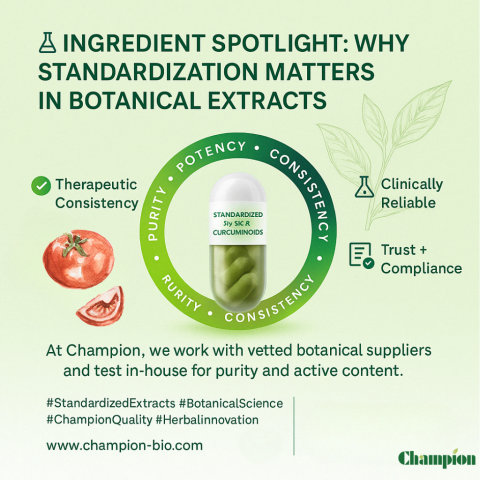Blog
31.Mar.2025
Kombucha market insight
The Rise of Kombucha in the Nutriscience Market: Opportunities for Growth and Innovation
Kombucha, the fermented tea beverage celebrated for its health benefits, has rapidly evolved from a niche product to a global phenomenon. As a nutriscience or food & beverages company, your business is uniquely positioned to capitalize on this growth by offering innovative kombucha products tailored to the needs of health-conscious consumers and businesses. This blog post explores the burgeoning kombucha market, key trends, and strategies for success, with a focus on Asia-Pacific—a region experiencing explosive growth.
Why Kombucha? The Science and Market Potential
Kombucha is more than just a trendy drink; it’s a functional beverage rich in probiotics, enzymes, and antioxidants. Its health benefits—ranging from improved gut health to enhanced immunity—make it a sought-after product in the wellness industry. The global kombucha market has grown exponentially in recent years, driven by rising consumer interest in natural, organic, and immunity-boosting products.
Market Growth at a Glance
Key Trends Shaping the Kombucha Market
Understanding current trends is crucial for developing products that resonate with your target audience. Here are some of the most significant developments:
1. Diversification of Product Formats
2. Flavor Innovations
Flavored kombucha dominates the market as consumers seek variety beyond traditional fermented tea flavors:
3. Organic and Clean Labeling
Consumers are prioritizing natural and organic beverages:
Hard kombucha (4–7% alcohol by volume) is emerging as a low-calorie alternative to traditional alcoholic beverages. Although still niche (~1–2% market share), it’s growing rapidly with a projected CAGR of 23–25% globally.
5. Functional Additives
Kombucha is increasingly infused with functional ingredients like adaptogens, collagen, superfoods, or extra probiotics:
Asia-Pacific: A Hotspot for Kombucha Growth
Asia-Pacific has become a focal point for kombucha innovation and market expansion. The region’s rapid adoption of kombucha is driven by urbanization, rising health awareness, and cultural alignment with fermented foods.
Consumer Behavior Trends
Local Flavor Adaptations
Asian brands excel at incorporating indigenous flavors into their products:
Collaborations with Global Players
Global brands are entering Asian markets through partnerships or tailored product launches:
Marketing Strategies for Success
To stand out in the competitive market, adopt these marketing strategies:
1. Educate Your Audience
Position yourself as an expert by sharing educational content about kombucha’s health benefits and market potential:
Use SEO-driven content marketing to attract potential clients:
Transparency builds trust:
Conclusion
The global rise of kombucha presents an exciting opportunity for B2B nutriscience companies to innovate and grow. By staying ahead of market trends—such as flavor diversification, functional additives, and sustainability—you can position your business as a leader in this thriving industry.
Whether you’re supplying raw materials or finished products, the key lies in understanding your clients’ needs and delivering solutions that align with consumer demands. With Asia-Pacific emerging as a hotspot for growth, now is the time to invest in this dynamic market segment.
Visit our website to learn more about our Kombucha product or contact us direclty for quotation
Kombucha, the fermented tea beverage celebrated for its health benefits, has rapidly evolved from a niche product to a global phenomenon. As a nutriscience or food & beverages company, your business is uniquely positioned to capitalize on this growth by offering innovative kombucha products tailored to the needs of health-conscious consumers and businesses. This blog post explores the burgeoning kombucha market, key trends, and strategies for success, with a focus on Asia-Pacific—a region experiencing explosive growth.
Why Kombucha? The Science and Market Potential
Kombucha is more than just a trendy drink; it’s a functional beverage rich in probiotics, enzymes, and antioxidants. Its health benefits—ranging from improved gut health to enhanced immunity—make it a sought-after product in the wellness industry. The global kombucha market has grown exponentially in recent years, driven by rising consumer interest in natural, organic, and immunity-boosting products.
Market Growth at a Glance
- The global kombucha market doubled from $2 billion in 2020 to $3.53 billion in 2022 and is projected to reach $9.7 billion by 2030, growing at a compound annual growth rate (CAGR) of 15.6%.
- North America leads in revenue share (47.8% as of 2021), but Asia-Pacific is the fastest-growing region, with annual growth rates of 20–25%.
- Asia-Pacific kombucha sales are estimated at $2.6 billion as of 2023, fueled by increasing awareness and demand in countries like China, Japan, India, and Australia.
Key Trends Shaping the Kombucha Market
Understanding current trends is crucial for developing products that resonate with your target audience. Here are some of the most significant developments:
1. Diversification of Product Formats
- Ready-to-Drink Bottles vs. Cans: While traditionally sold in glass bottles, canned kombucha is gaining popularity due to its portability and shelf-stability. For example, Australia’s Remedy Drinks introduced zero-sugar canned kombucha to cater to convenience-seeking consumers.
- Alternate Formats: Innovations like powdered kombucha sticks (e.g., TEAZEN in South Korea) have created new consumption methods that appeal to busy, tech-savvy consumers.
2. Flavor Innovations
Flavored kombucha dominates the market as consumers seek variety beyond traditional fermented tea flavors:
- Fruity flavors like ginger, berry, and citrus are particularly popular.
- Local ingredients are increasingly used in Asia-Pacific markets—for instance:
- Hong Kong brands offer blends like goji berry with green tea.
- Indian brands incorporate flavors like mango-turmeric.
- Southeast Asian brands use native ingredients such as lemongrass and butterfly pea flower.
3. Organic and Clean Labeling
Consumers are prioritizing natural and organic beverages:
- Many brands emphasize clean-label claims such as “non-GMO,” “gluten-free,” and “low sugar.”
- In China, demand for organic kombucha aligns with consumer preferences for chemical-free drinks.
Hard kombucha (4–7% alcohol by volume) is emerging as a low-calorie alternative to traditional alcoholic beverages. Although still niche (~1–2% market share), it’s growing rapidly with a projected CAGR of 23–25% globally.
5. Functional Additives
Kombucha is increasingly infused with functional ingredients like adaptogens, collagen, superfoods, or extra probiotics:
- Products targeting specific wellness needs (e.g., stress relief or post-workout recovery) are gaining traction.
- For example, “POWER Kombucha” includes natural caffeine for energy boosts.
Asia-Pacific: A Hotspot for Kombucha Growth
Asia-Pacific has become a focal point for kombucha innovation and market expansion. The region’s rapid adoption of kombucha is driven by urbanization, rising health awareness, and cultural alignment with fermented foods.
Consumer Behavior Trends
- Younger demographics (millennials and Gen Z) are driving demand for trendy, health-focused beverages.
- Social media endorsements have significantly boosted product visibility—for instance, TEAZEN’s powdered kombucha became a viral hit after being endorsed by K-pop stars1.
- Eco-conscious consumers prefer sustainable packaging options like recyclable glass bottles or cans.
Local Flavor Adaptations
Asian brands excel at incorporating indigenous flavors into their products:
- Malaysian brand WonderBrew offers butterfly pea flower-infused kombucha.
- South Korea’s SoulSmith combines red ginseng with traditional fermentation techniques.
- Indian brands experiment with unique blends like chamomile-date or smoky oolong.
Collaborations with Global Players
Global brands are entering Asian markets through partnerships or tailored product launches:
- Starbucks introduced six kombucha flavors under its Evolution Fresh label in select Asian markets.
- Remedy Drinks collaborated with Chinese e-commerce platforms to launch fruity-flavored kombuchas tailored to local tastes.
Marketing Strategies for Success
To stand out in the competitive market, adopt these marketing strategies:
1. Educate Your Audience
Position yourself as an expert by sharing educational content about kombucha’s health benefits and market potential:
- Publish whitepapers or case studies showcasing your Kombucha product.
- Publish product knowledge paper about your product.
Use SEO-driven content marketing to attract potential clients:
- Optimize your website with keywords like “functional beverage solutions.” or "Kombucha drink"
- Share your customer testimonials.
Transparency builds trust:
- Provide detailed information about your sourcing practices and production methods.
- Obtain certifications like organic or halal to enhance credibility.
Conclusion
The global rise of kombucha presents an exciting opportunity for B2B nutriscience companies to innovate and grow. By staying ahead of market trends—such as flavor diversification, functional additives, and sustainability—you can position your business as a leader in this thriving industry.
Whether you’re supplying raw materials or finished products, the key lies in understanding your clients’ needs and delivering solutions that align with consumer demands. With Asia-Pacific emerging as a hotspot for growth, now is the time to invest in this dynamic market segment.
Visit our website to learn more about our Kombucha product or contact us direclty for quotation





















